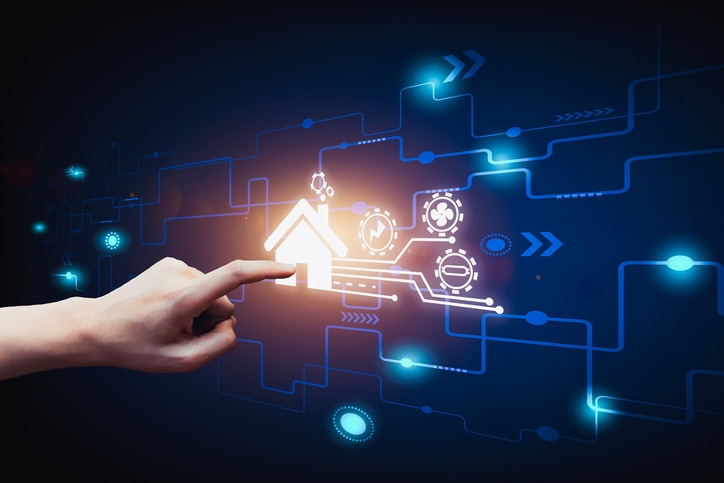Smart home technology is revolutionizing the way we live, offering enhanced convenience, security, and energy efficiency. With the rise of Internet of Things (IoT) devices, it’s no surprise that homes around the world are becoming smarter. From smart thermostats to voice-controlled lights, this article explores the benefits, components, and trends surrounding smart home technology.
Table of Contents
What is Smart Home Technology?
Smart home technology refers to the use of internet-connected devices and systems that can automate, control, and monitor various aspects of a home. These systems include lighting, heating, security, entertainment, and appliances, all of which can be managed remotely via smartphones, voice assistants, or automated schedules.
Key Features of Smart Homes
- Automation: Smart homes can automate everyday tasks like turning on the lights or adjusting the thermostat. You can program your home to adjust itself based on your schedule.
- Voice Control: With devices like Amazon Echo, Google Home, and Apple HomePod, homeowners can control devices using voice commands, making them more accessible and convenient.
- Energy Efficiency: Smart thermostats and energy monitoring systems help optimize energy consumption, reducing electricity bills while being eco-friendly.
- Security: With smart security cameras, doorbells, locks, and sensors, homeowners can monitor their property remotely and receive alerts in real time.
Benefits of Smart Home Technology
As smart homes continue to evolve, they provide various advantages that appeal to homeowners seeking more control, comfort, and peace of mind.
Enhanced Convenience
One of the main attractions of smart home technology is the convenience it provides. Imagine walking into your home, and with just a voice command or a tap on your phone, your lights, heating, and entertainment system adjust to your liking. Whether you’re at home or on vacation, you can always manage your home.
Improved Security
Smart home security systems offer real-time surveillance and control. With smart cameras, motion detectors, and smart locks, homeowners can monitor their property remotely. If something suspicious is detected, they can receive alerts on their phones and take action immediately, whether it’s calling the police or activating alarms.
Energy and Cost Savings
With devices like smart thermostats and smart lighting, homeowners can cut down on energy usage, which leads to lower utility bills. For instance, a smart thermostat can learn your preferences and adjust the temperature in your home based on your schedule, optimizing energy consumption.
Key Components of Smart Home Systems
Smart home systems are composed of several components that work together to make life easier. Let’s take a look at the essential parts of any smart home.
1. Smart Thermostats
Smart thermostats, such as the Nest Learning Thermostat, allow homeowners to adjust the temperature of their home remotely. These devices learn your preferences and adjust based on your habits, resulting in an efficient heating and cooling system that saves both energy and money.
2. Smart Lighting
Smart lighting systems let you control the lighting in your home from anywhere. They can be controlled via smartphone apps or voice commands. You can adjust the brightness, color, and even create lighting schedules to suit your lifestyle. Popular brands include Philips Hue and LIFX.
3. Smart Security Systems
These systems are designed to enhance the security of your home. From doorbell cameras like Ring to smart locks and motion sensors, smart security devices help you keep your property safe. You can remotely monitor your home, receive alerts, and even lock or unlock doors from your smartphone.
4. Voice Assistants
Voice assistants like Amazon Alexa, Google Assistant, and Apple Siri are the central hubs for controlling smart home devices. You can use voice commands to manage devices such as lights, thermostats, and even entertainment systems, making them an essential feature in most smart homes.
5. Smart Appliances
Smart appliances, including refrigerators, ovens, and washing machines, are increasingly becoming part of modern smart homes. These appliances can be controlled remotely, and they come with features like scheduling, energy consumption tracking, and real-time alerts.
The Future of Smart Homes
The future of smart homes looks promising, with the technology continuing to advance and offer even more benefits. Artificial intelligence (AI) and machine learning will play an essential role in making smart homes more intuitive and responsive. As smart home technology becomes more affordable and accessible, the number of homes adopting these systems will increase significantly.
Upcoming Trends in Smart Home Technology
- Integration with Artificial Intelligence (AI): AI will enable smart homes to learn user preferences better and adapt to their needs automatically, offering a more personalized experience.
- 5G Connectivity: The arrival of 5G technology will improve the speed and reliability of smart home devices, allowing for faster communication between devices.
- Health Monitoring: Future smart homes may incorporate health monitoring devices that track vital signs, such as blood pressure and heart rate, contributing to improved well-being and wellness.
Conclusion
Smart home technology is transforming the way we live by making our homes more comfortable, efficient, and secure. With advancements in AI, voice control, and energy efficiency, the future of smart homes is bright. Whether you’re looking to improve your home’s security, save on energy bills, or simply enjoy the convenience of controlling your home remotely, smart home technology is here to stay. As the technology evolves, we can expect even more innovation and improvements to enhance our everyday lives.

